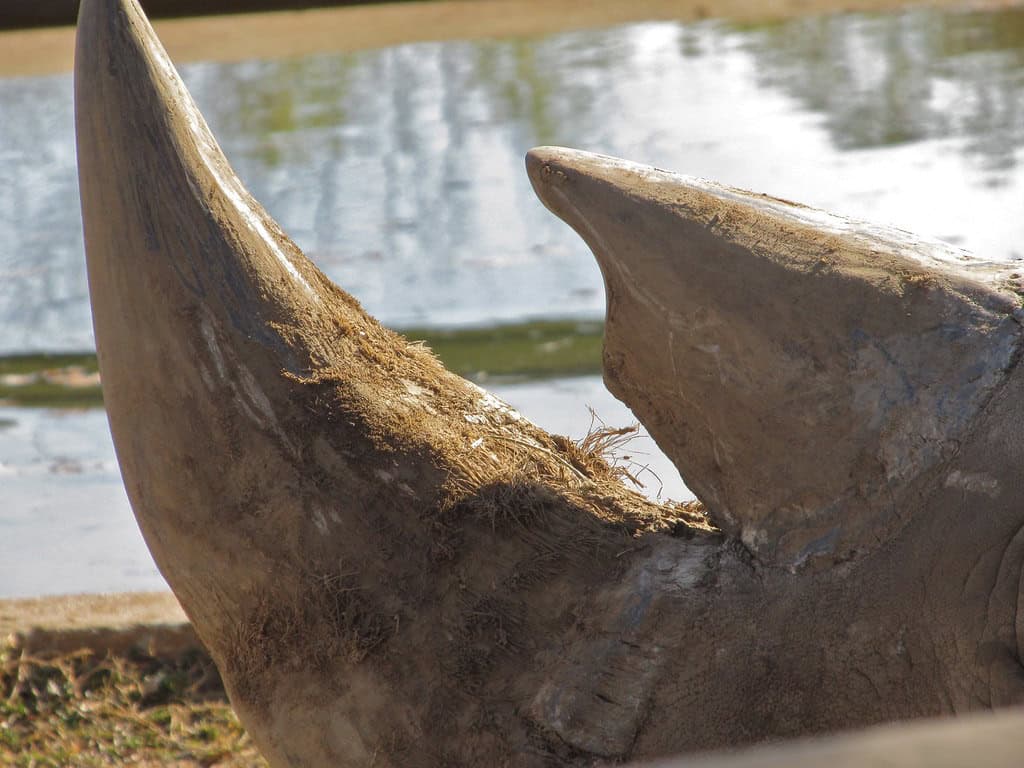When most people think of rhino horns, they immediately picture these massive animals charging at predators or defending their territory. While defense is certainly an important function, rhino horns serve a surprisingly diverse range of purposes in these magnificent creatures’ lives. From complex social interactions to finding food and attracting mates, rhino horns are versatile tools that have evolved to support multiple aspects of rhino behavior and survival. This fascinating adaptation goes far beyond being merely a weapon, playing crucial roles in the daily lives and long-term survival of all five rhino species across Africa and Asia.
The Anatomy of Rhino Horns
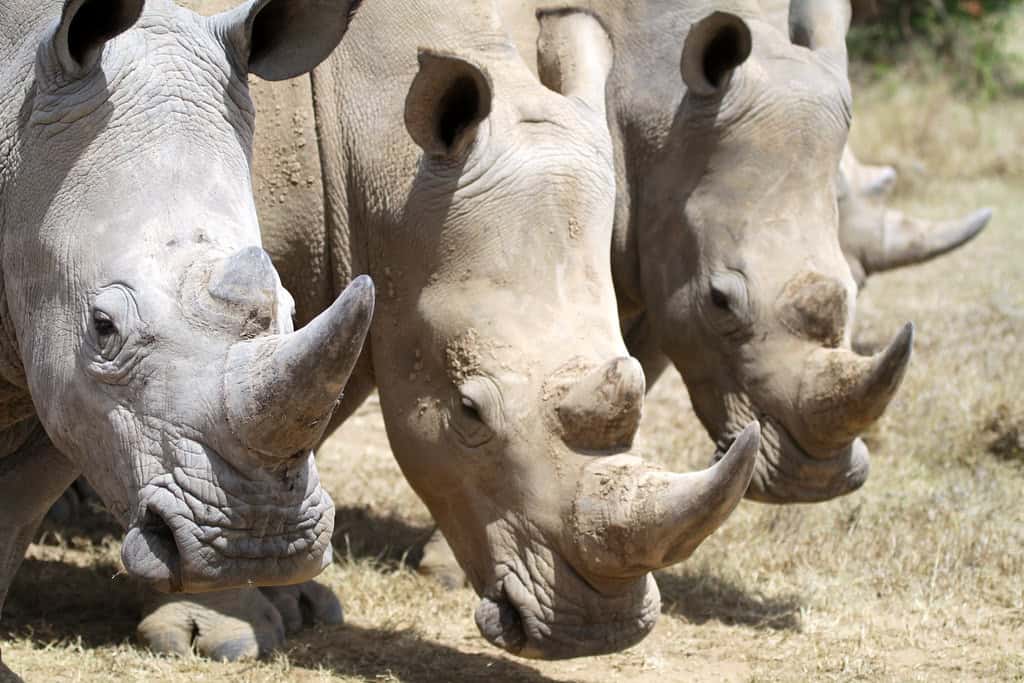
Unlike the horns of cattle or antelope, which have a bony core, rhino horns are made entirely of keratin – the same protein that forms human fingernails and hair. This dense keratin grows in tightly packed filaments from the rhino’s skin, creating an incredibly strong structure without any bone or cartilage inside. The horn continues to grow throughout the rhino’s life, with wear and breakage balanced by ongoing growth at the base. African rhino species typically have two horns (a longer front horn and a shorter rear horn), while the Javan and Indian rhinos have a single horn, and the Sumatran rhino has two smaller horns.
The microstructure of rhino horn is particularly fascinating, consisting of hollow tubules of keratin surrounded by a matrix of melanin and calcium. This structure gives the horn remarkable properties, including the ability to withstand significant impact without shattering. African white rhinos can have front horns reaching over 150 cm (59 inches) in length, while black rhinos typically have more curved horns averaging around 50 cm (20 inches). This anatomical marvel provides rhinos with a multifunctional tool that serves them in numerous ways beyond combat.
Defensive Capabilities
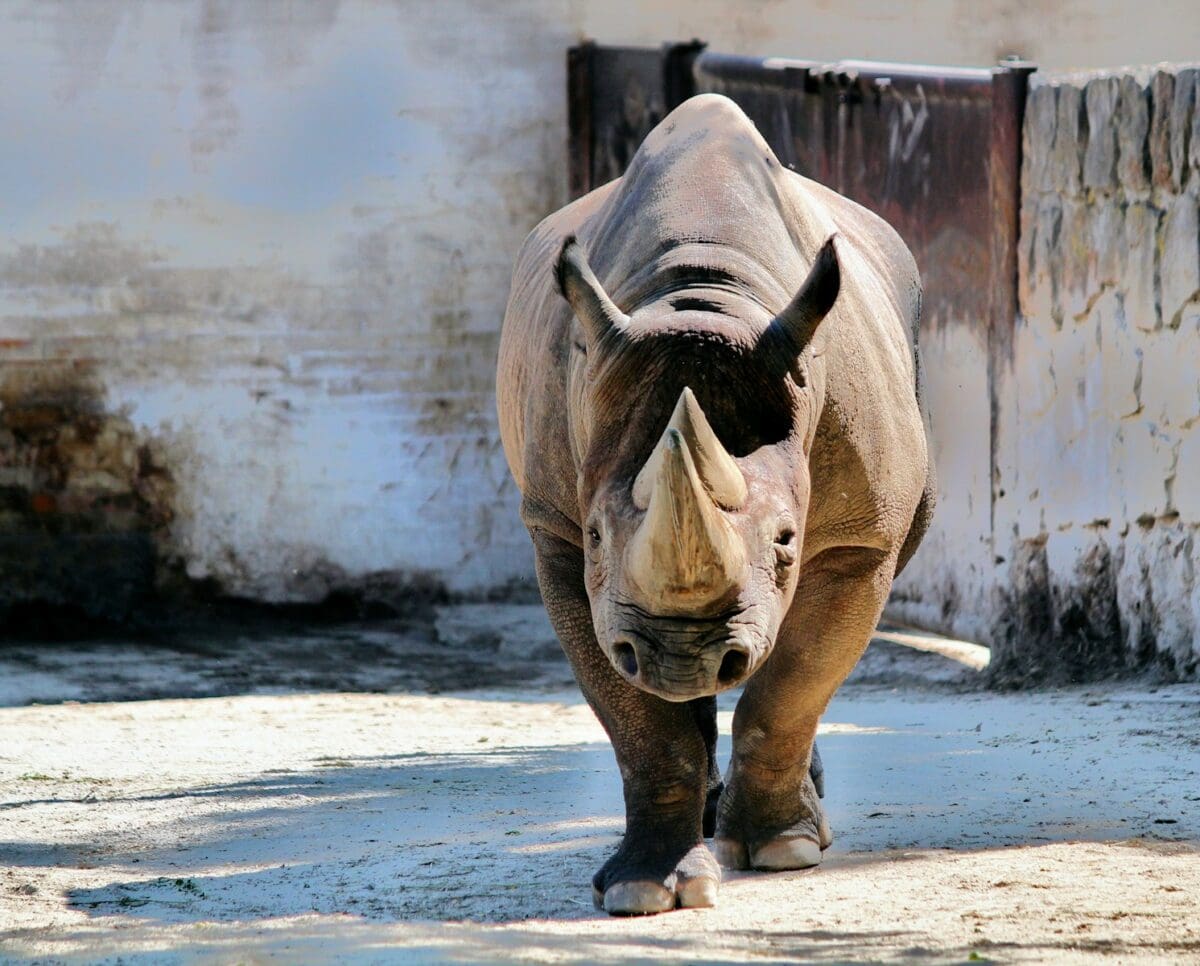
The most well-known function of rhino horns is undoubtedly defense. These impressive structures serve as formidable weapons against predators like lions, hyenas, and crocodiles. A charging rhino can reach speeds of up to 55 km/h (34 mph), making the horn a devastating weapon capable of goring or tossing predators. Mother rhinos are particularly aggressive when defending their calves, using their horns to create a protective barrier between their young and any threat. The mere presence of the horn is often enough to deter potential predators, who recognize the danger it represents.
Beyond external threats, rhinos also use their horns during confrontations with other rhinos. During territorial disputes, male rhinos may engage in pushing contests, using their horns to test each other’s strength and resolve. These confrontations rarely result in serious injury, as they typically end when one individual establishes dominance or retreats. The horn’s evolution as a defensive adaptation has been so successful that adult rhinos have virtually no natural predators except humans, who unfortunately hunt them specifically for these remarkable structures.
Foraging and Food Manipulation
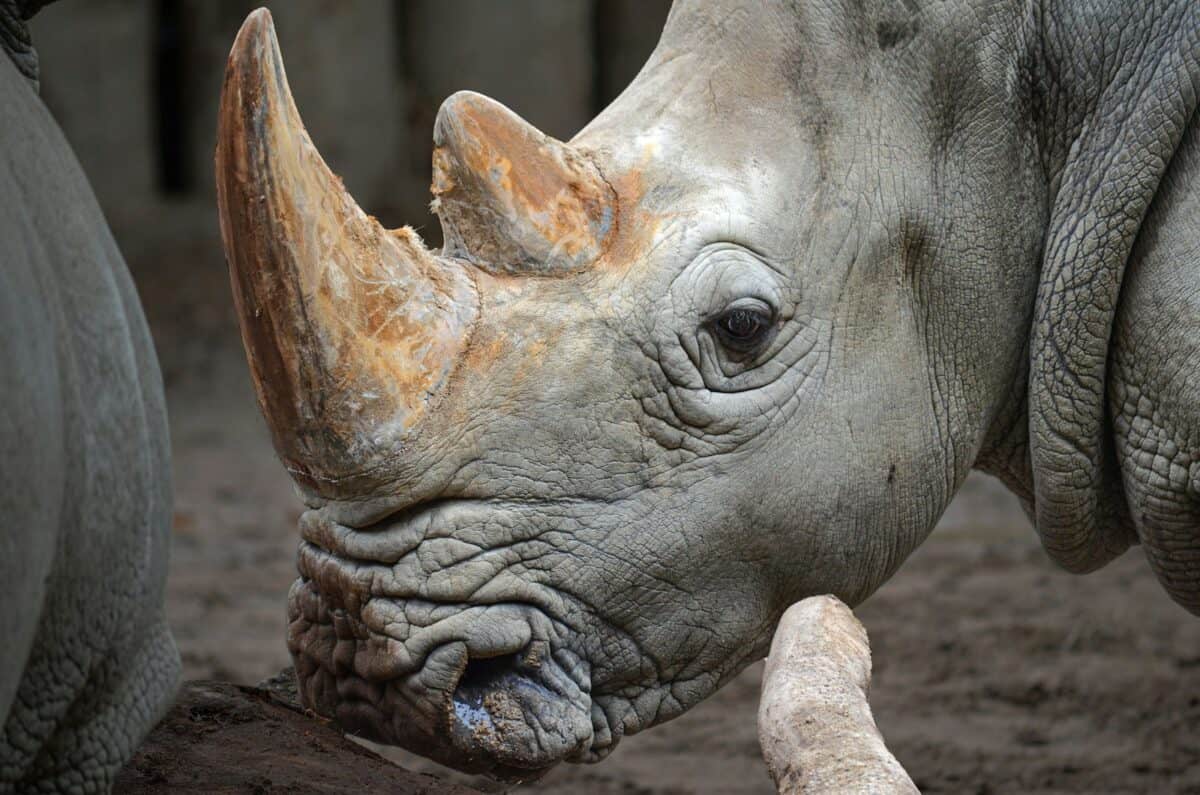
One of the less obvious but vitally important functions of rhino horns is their use in foraging. Different rhino species have evolved horn shapes that correspond to their feeding habits. White rhinos, which are grazers that feed primarily on grasses, use their square lips and the broad base of their horn to clear paths through tall grass. By swinging their heads from side to side, they can create grazing lanes that expose shorter, more nutritious grasses. Their front horn’s flat base is particularly well-adapted to this sweeping motion, functioning almost like an agricultural tool.
Black rhinos, being browsers that feed on leaves, branches, and fruits from bushes and trees, use their hooked upper lip and pointed horn in a different way. They skillfully use their horn to pull down branches that would otherwise be out of reach, effectively extending their feeding range vertically. They can also use the tip of their horn to break open tough fruits or strip bark from trees. This specialized use of the horn allows different rhino species to access food sources that might otherwise be unavailable, reducing competition between species that share the same habitat.
Social Signaling and Communication
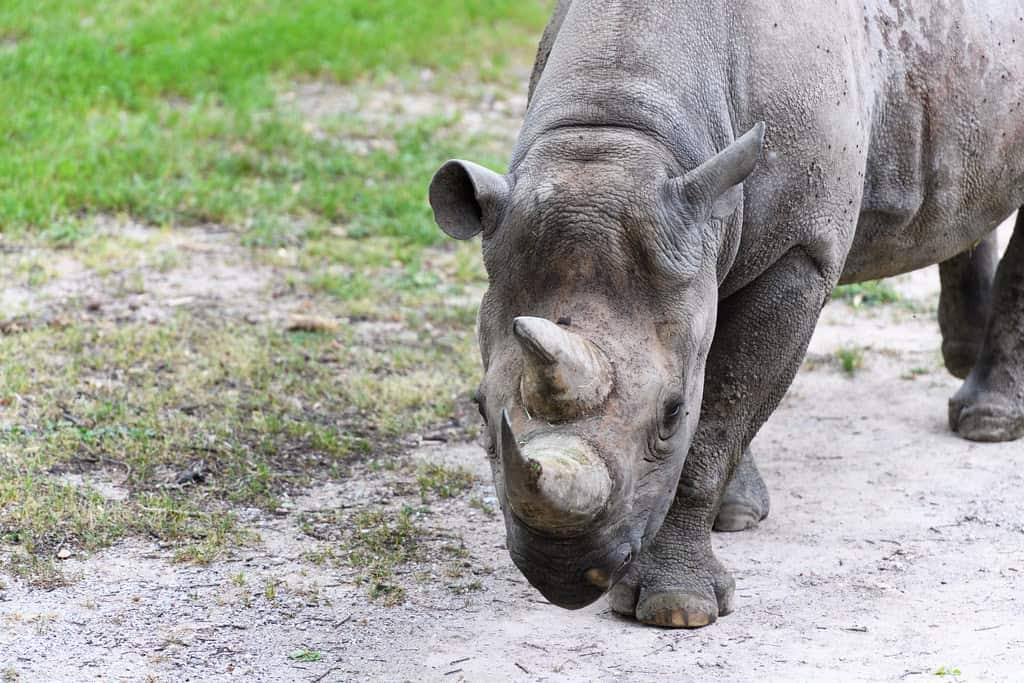
Rhino horns play a crucial role in non-verbal communication between individuals. The size, shape, and condition of a rhino’s horn conveys important information about its age, health, and social status. Dominant males typically maintain impressive horns that signal their fitness to potential mates and rivals alike. When rhinos encounter each other, they often engage in a series of ritualized behaviors that include horn displays, allowing them to assess each other without immediate conflict. These silent signals help establish and maintain social hierarchies within rhino populations.
Interestingly, rhinos also use their horns in more subtle forms of communication. They may rub their horns against trees, rocks, or the ground, leaving behind scent marks from glands near the base of the horn. These scent marks serve as olfactory signposts for other rhinos, conveying information about the individual’s identity, reproductive status, and recent movements. This form of communication is particularly important for solitary species like the black rhino, helping them maintain territorial boundaries and locate potential mates during breeding season without constant direct contact.
Courtship and Mating Rituals
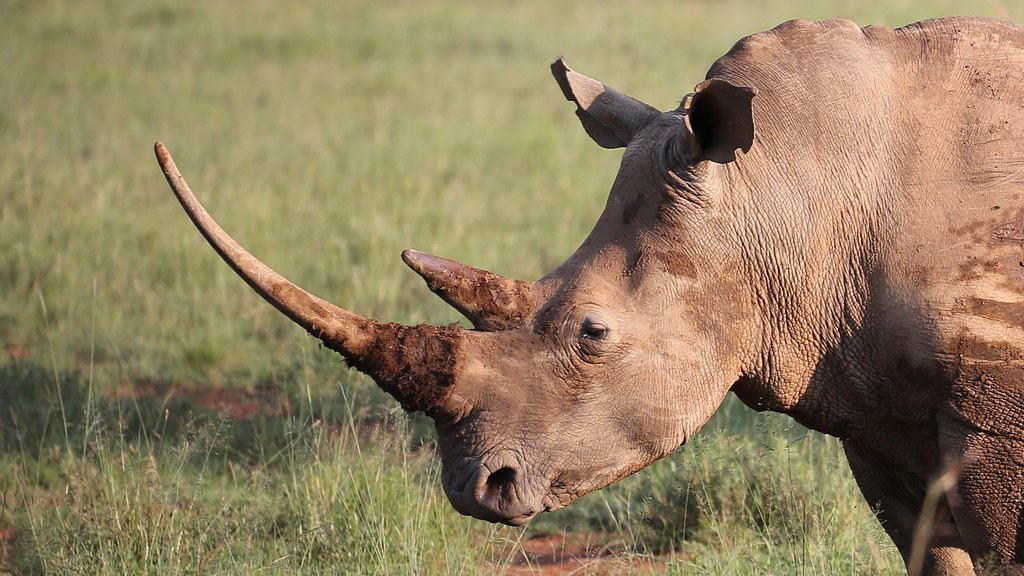
During the breeding season, male rhinos use their horns extensively in courtship rituals. The horn serves as a visual display of genetic quality and health, with females often preferring males with larger, well-formed horns. In white rhinos, males perform impressive displays that include marking territory with their horns and urine, creating dung middens, and vocalizing to attract females. When a female is receptive, the male may gently rest his horn on her back or flanks as part of the pre-mating ritual, using it as a tool for tactile communication rather than aggression.
Competition between males for breeding rights frequently involves horn-to-horn combat. These contests can range from relatively gentle pushing matches to more aggressive fights where the horns are used to intimidate and potentially injure rivals. The winner of these confrontations earns the right to mate with receptive females, making the horn a direct contributor to reproductive success. This sexual selection has likely played a significant role in the evolution of horn size and shape, particularly in male rhinos who typically have larger, more pronounced horns than females of the same species.
Territorial Marking
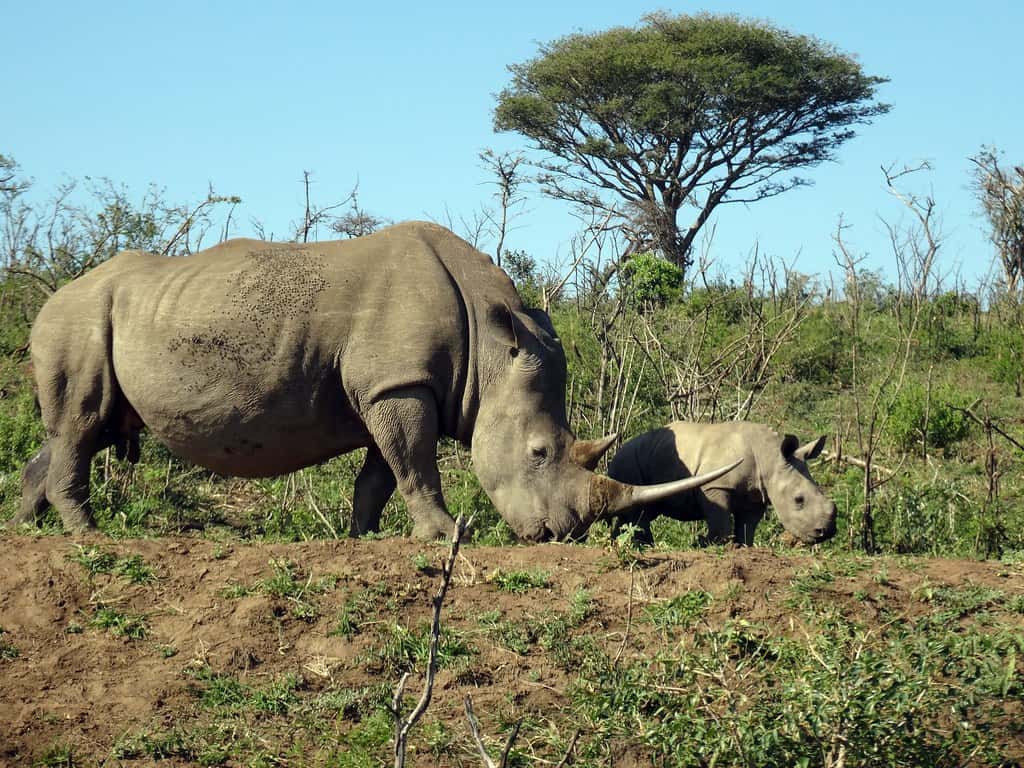
Rhinos are highly territorial animals, and their horns serve as essential tools for establishing and maintaining these territories. Both male and female rhinos use their horns to create visible markers by scraping the ground, breaking branches, or gouging tree trunks. These physical alterations to the environment serve as visual warnings to other rhinos that the area is claimed. White rhino males are particularly known for their elaborate territorial marking, creating large dung middens that they then scatter using sweeping motions with their horns, spreading their scent over a wider area.
The horn is also used to create what researchers call “horn scrapes” – distinctive marks left on the ground or vegetation that serve as visual boundary markers. Black rhinos often create these marks along regularly used paths or near water sources, effectively posting “no trespassing” signs for other rhinos. These territorial markings help reduce direct conflict between individuals by clearly communicating ownership of resources. Over time, neighboring rhinos learn to respect these boundaries, approaching shared resources like water holes at different times to avoid confrontation.
Maternal Care and Calf Protection
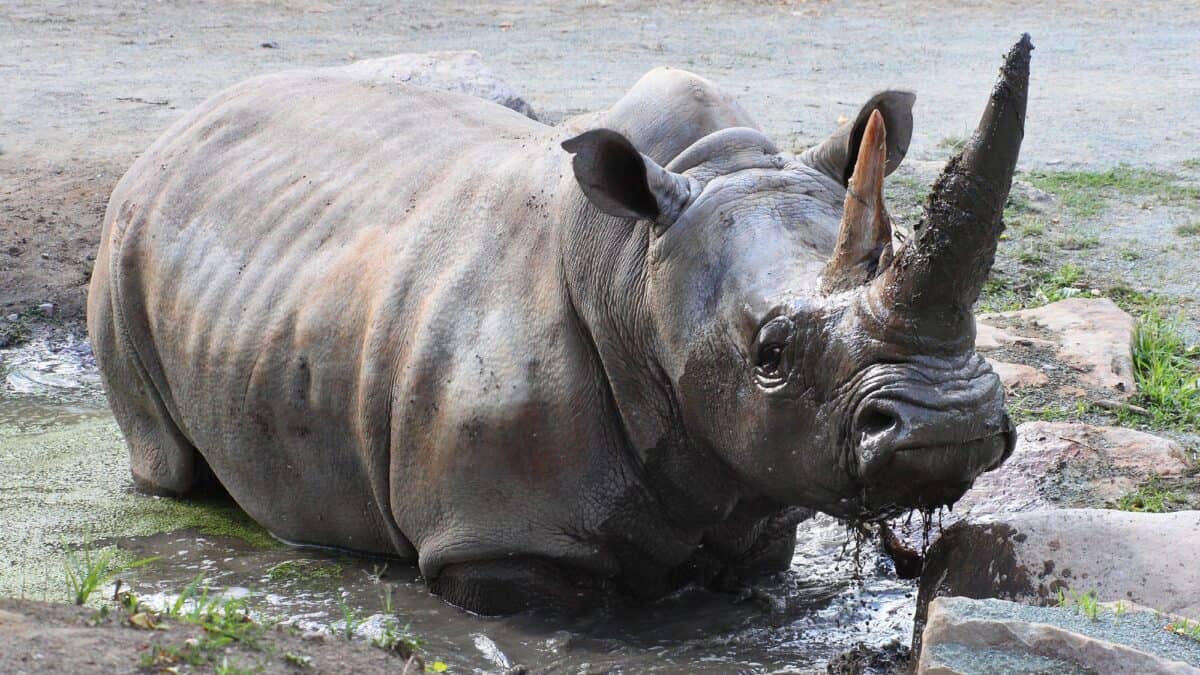
Female rhinos use their horns extensively in the care and protection of their calves. A mother rhino will often position her calf behind her, using her body and horn as a protective barrier against potential threats. When moving through dense vegetation, she may use her horn to clear a path for her calf to follow safely. This behavior is particularly important during the first weeks of a calf’s life when it is most vulnerable to predators like lions, hyenas, and crocodiles. The maternal use of the horn demonstrates its versatility as both a tool for environmental manipulation and a weapon for defense.
Researchers have also observed mother rhinos using their horns as guidance tools for their calves. By gently nudging the calf with the side of her horn, the mother can direct it away from danger or toward food and water. This tactile communication continues throughout the 2-4 years that a calf typically stays with its mother, forming an important part of the learning process as young rhinos develop the skills they’ll need for independent survival. The horn thus serves as an extension of maternal care, enhancing the mother’s ability to protect and teach her offspring.
Environmental Interaction and Habitat Modification
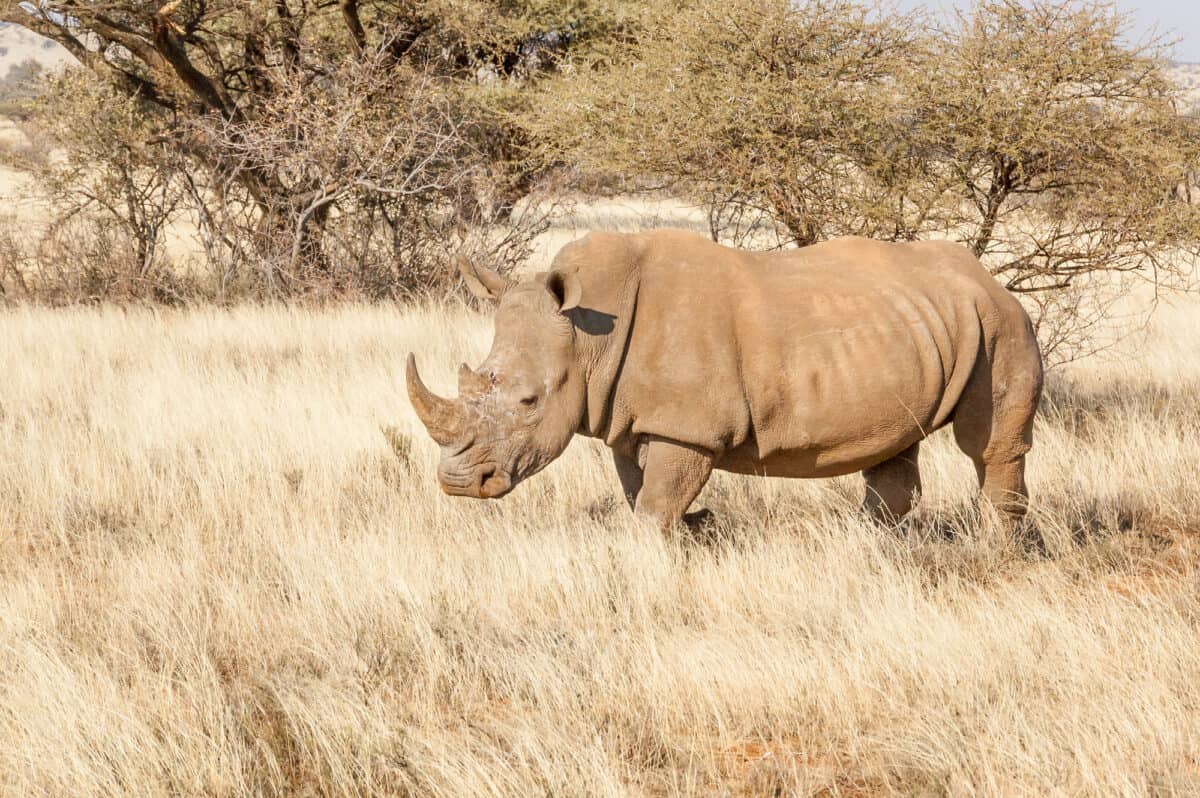
Rhinos are often described as ecosystem engineers because their activities significantly alter their habitat – and the horn plays a central role in this process. As rhinos move through dense vegetation, they use their horns to push aside or break branches, creating pathways that other animals can use. In savanna ecosystems, these rhino paths can become important firebreaks that help control the spread of wildfires. By breaking through dense thickets, rhinos also create open patches that allow new plant growth, increasing habitat diversity and benefiting numerous other species.
The horn is also used to dig for water during dry seasons. White rhinos in particular are known to use their horns to expand existing water holes or create depressions where underground water can collect. These water sources become valuable resources not just for the rhinos but for many other species in the ecosystem. By modifying their environment in these ways, rhinos act as keystone species whose activities support biodiversity far beyond what might be expected from a single species. Their horns, therefore, contribute significantly to ecosystem health and resilience.
Thermoregulation and Comfort
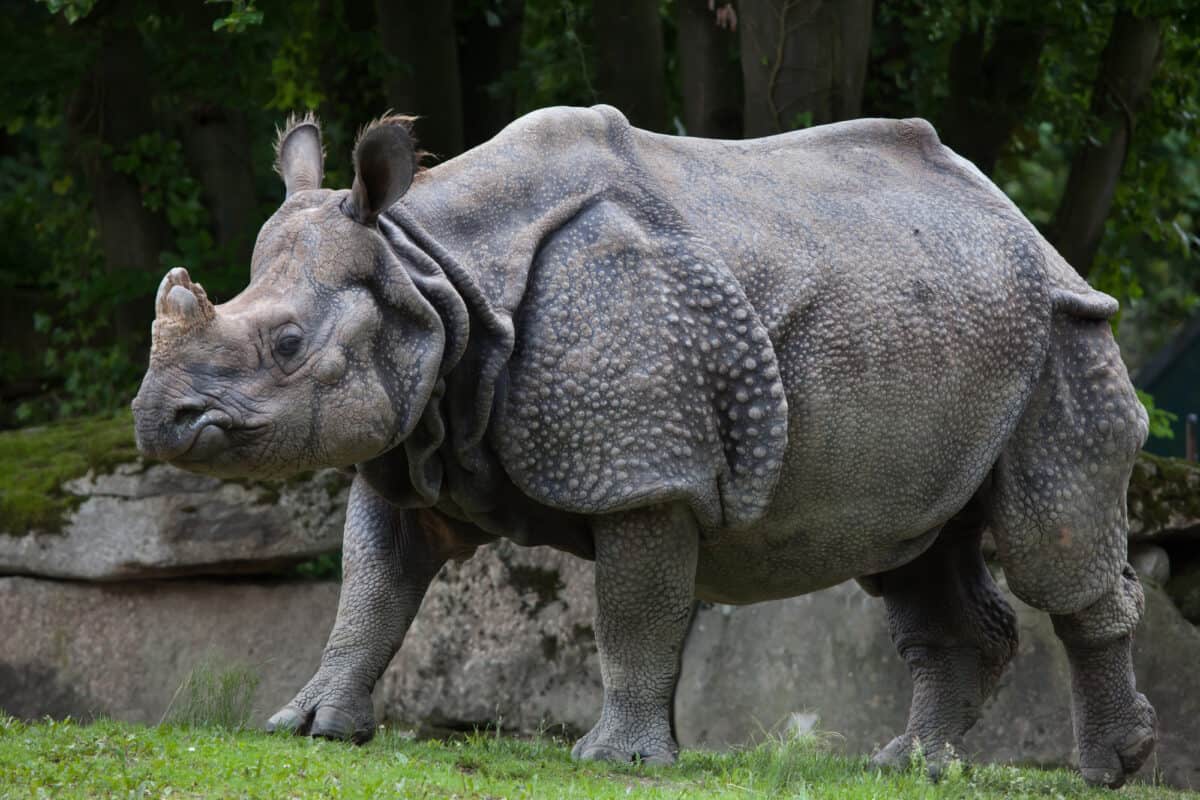
An often overlooked function of rhino horns is their role in thermoregulation. The keratin structure of the horn contains a network of blood vessels at its base, allowing for some heat exchange with the environment. While not as effective as true antlers (which are living bone with active blood circulation throughout), rhino horns can help dissipate excess body heat, particularly important for animals that often live in hot climates. The horn’s surface area provides additional cooling capacity beyond what the rhino’s skin alone could offer.
Rhinos also use their horns for simple comfort behaviors, such as scratching areas of their thick skin that they cannot reach with their feet or mouth. They may rub their horns against trees or rocks to alleviate itching or to remove parasites. White rhinos have been observed using their horns to rest their heavy heads when lying down, positioning the horn to support their weight and reduce strain on neck muscles. These comfort functions, while less dramatic than defense or foraging, contribute significantly to the rhino’s daily wellbeing and demonstrate the horn’s utility beyond survival functions.
Species-Specific Horn Adaptations

Each rhino species has evolved horn characteristics that reflect its particular ecological niche and behavioral needs. The white rhino’s massive, forward-pointing front horn complements its grazing lifestyle, helping it move through grasslands efficiently. Black rhinos have more hook-shaped horns that are perfectly adapted for pulling down branches and manipulating woody vegetation. The Indian rhino’s single horn is shorter and stouter, suited to its mixed diet and more aquatic habitat where it pushes through dense riverine vegetation.
The Sumatran rhino, the smallest and most ancient rhino species, has two horns that are smaller and hairier than those of African species, adapted for moving through dense rainforest undergrowth without becoming entangled. The nearly extinct Javan rhino has the smallest horn of all rhino species, sometimes appearing as little more than a bump in females. These variations demonstrate how horn morphology has evolved to serve specific ecological functions, with each species developing the horn structure that best supports its survival in its particular environment.
The Tragic Human Connection
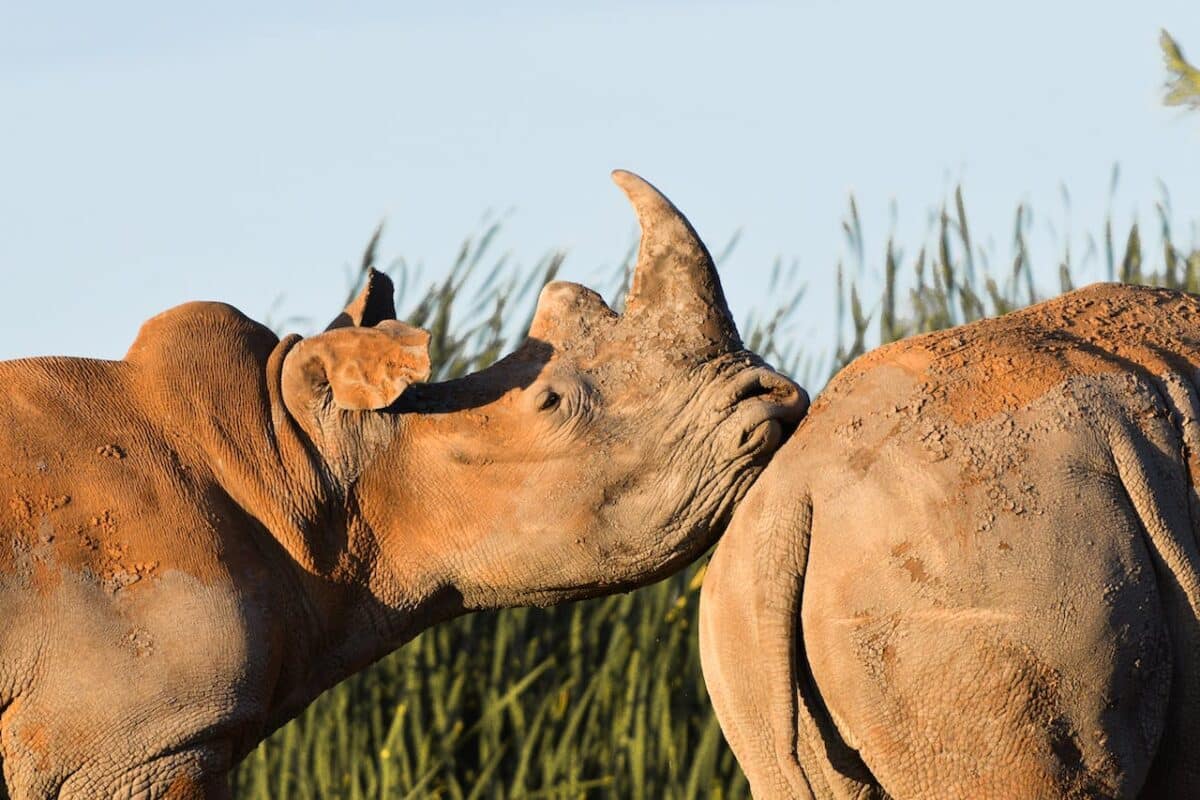
Tragically, the very versatility and importance of rhino horns to their survival has made them targets for human exploitation. Valued in traditional medicine systems despite having no proven medicinal properties (as they are made of keratin, like human fingernails), rhino horns have become one of the world’s most valuable illegal wildlife products. This demand has driven poaching to crisis levels, with all five rhino species now endangered or critically endangered. White rhinos in particular have suffered devastating population declines, with the northern white rhino subspecies now functionally extinct with only two females remaining.
Conservation efforts include dehorning (removing horns humanely to deter poachers), armed guards protecting rhino populations, synthetic horn development to flood black markets, and education campaigns in consumer countries. These measures have had mixed success, with some populations beginning to stabilize while others continue to decline. The irony is painful: the very adaptation that has served rhinos so well throughout their evolution has become their greatest vulnerability in the modern world. Understanding the full range of horn functions underscores not just what these animals stand to lose when poached, but what ecosystems lose when rhino populations decline.
Conclusion: A Multifunctional Marvel of Evolution
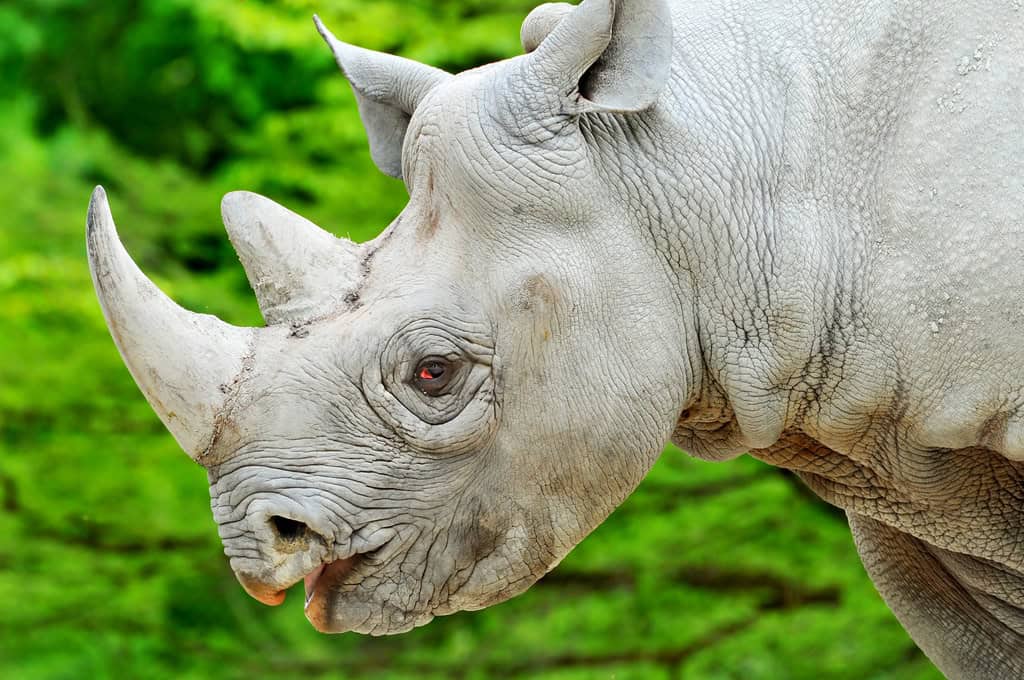
Rhino horns represent one of nature’s most remarkable adaptations, serving far more purposes than the defensive weapon most commonly portrayed in popular media. From foraging and territorial marking to social communication and maternal care, these versatile structures support virtually every aspect of rhino behavior and ecology. The diverse ways rhinos use their horns demonstrate nature’s efficiency in evolving structures that serve multiple functions, increasing their adaptive value. Understanding this versatility deepens our appreciation for these magnificent animals and highlights the complex relationships between anatomy, behavior, and ecology.
As rhinos face unprecedented threats from habitat loss and poaching, recognizing the full significance of their horns becomes increasingly important for conservation efforts. When a rhino loses its horn to poachers, it loses not just a defensive weapon but a tool essential for feeding, communicating, reproducing, and caring for offspring. By appreciating rhino horns as the multifunctional marvels they truly are, we gain a more complete understanding of what’s at stake in rhino conservation and why protecting these animals is crucial not just for their survival but for the health of entire ecosystems. The rhino’s horn stands as a testament to the intricate ways evolution shapes anatomy to serve an animal’s complete way of life, not just a single purpose.
- How Rhinos Use Their Horns (It’s for More Than Defense) - August 12, 2025
- 11 Animals That Can Recognize Themselves in a Mirror - August 12, 2025
- What Happens When Bald Eagles Fight in the Sky? - August 11, 2025

